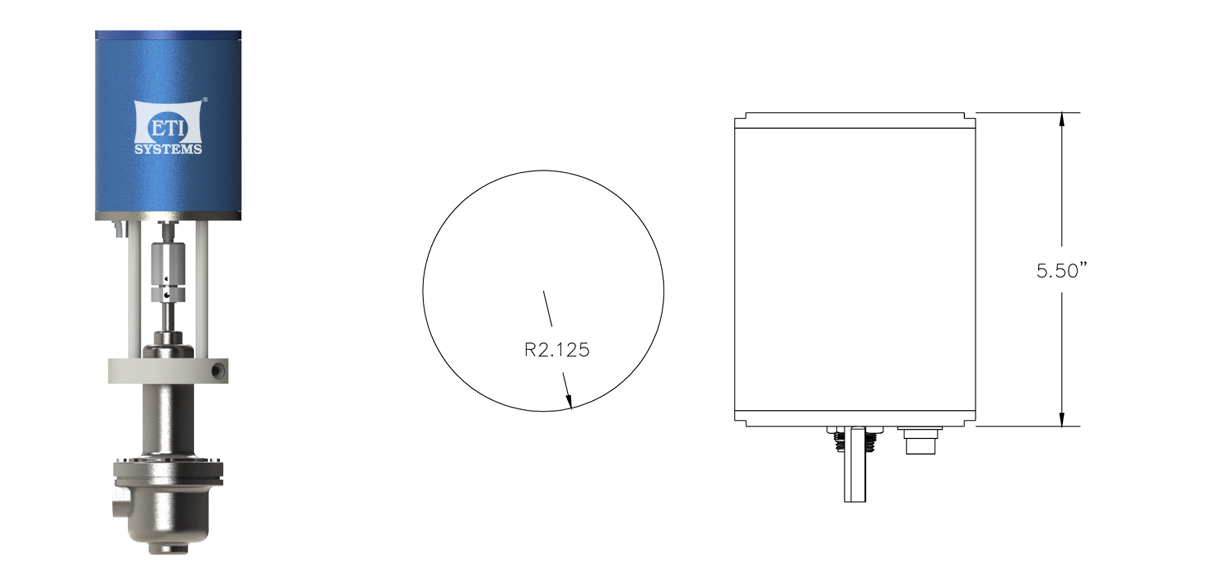Rotary Potentiometers: Turning Control into Precision
Are you tired of struggling with imprecise controls and unpredictable results? Look no further, because rotary potentiometers are here to revolutionize the way you handle control systems! Whether you’re a tech enthusiast or an engineer seeking precision, this blog post will unravel the wonders of rotary potentiometers and how they can transform your experience. Get ready to turn up the dial on accuracy as we embark on a journey through the world of Rotary Potentiometers: Turning Control into Precision.
Introduction to Rotary Potentiometers
A rotary potentiometer is a commonly used type of electrical resistor. They are often used to control the volume of audio equipment, but can also be used to measure variables such as position and speed.
Potentiometers work by using a wiper that slides along a resistive element. This resistance creates a voltage difference between the two ends of the element, which can be measured. The amount of resistance depends on the position of the wiper, which can be controlled by rotating the knob.
Rotary potentiometers are available in a variety of sizes and with different types of resistive elements. The most common type is the carbon potentiometer, which uses a carbon track as the resistive element. Carbon potentiometers are inexpensive and have good linearity, but they are not suitable for high-precision applications. Metal film potentiometers use a thin film of metal deposited on an insulating substrate as the resistive element. These have better temperature stability and precision than carbon types, but they are more expensive. Cermet potentiometers use a ceramic material filled with metal particles as the resistive element. These have even better precision than metal film types, but they are even more expensive.
The main advantage of rotary potentiometers over other types is their low cost and simplicity. They can be used in a wide range of applications where precision is not critical.
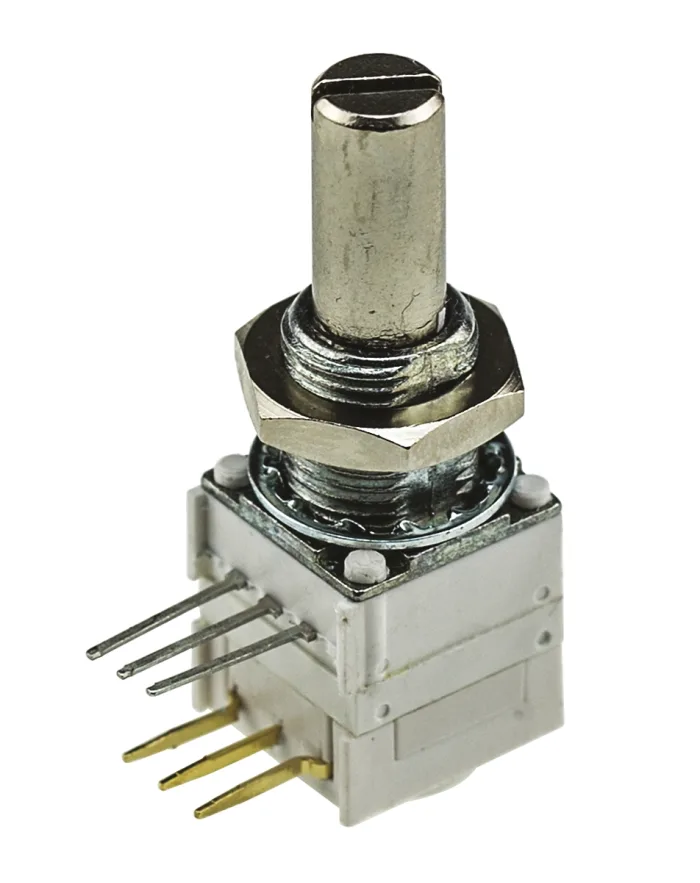

What are Rotary Potentiometers Used For?
Rotary potentiometers are used in a wide variety of applications, from audio volume control to motor speed control. In audio applications, rotary potentiometers are used to control the volume of an amplifier or speaker. Motor speed control applications use rotary potentiometers to adjust the speed of a motor. Other common uses for rotary potentiometers include dimming lights and controlling the position of a joystick.
Rotary potentiometers can also be used for sensing position or rotation. This allows them to be used in robotics applications, where they are used to control the angle of a robotic arm or the speed of a wheeled robot. In this way, rotary potentiometers can be used as sensors for feedback control systems that require precise positional information.
In general, rotary potentiometers are used to measure or control an electrical signal by varying the total resistance of the circuit.
Advantages of Using a Rotary Potentiometer
There are many advantages of using a rotary potentiometer over other types of potentiometers, including:
- Increased accuracy – Rotary potentiometers are more accurate than other types of potentiometers, making them ideal for applications where precision is key.
- Increased durability – Rotary potentiometers are built to last, with many models able to withstand up to 1 million cycles without degradation in performance. This makes them ideal for industrial and commercial applications.
- Versatility – Rotary potentiometers can be used in a wide variety of applications, from audio volume control to motor speed control.
- Easy to use – Rotary potentiometers are easy to install and use, making them a popular choice for both professional and DIY enthusiasts.
- Low cost – Rotary potentiometers are relatively inexpensive, making them well suited for budget conscious projects.

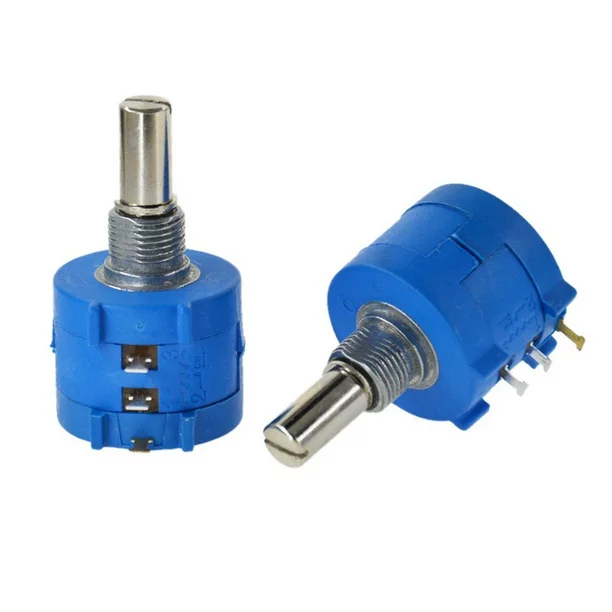
How do Rotary Potentiometers Work?
A rotary potentiometer, also called a “pot” for short, is a type of electrical resistor used to control the amount of current in a circuit. By turning the knob on the pot, you can change the resistance, and thus the amount of current, flowing through the circuit. The more resistance there is, the less current flows.
Pots are commonly used to control volume levels in audio equipment, but they can also be used to adjust other settings such as tone or equalization. They are often found in guitar amps and home stereo systems. Pots come in a variety of shapes and sizes, but they all work in basically the same way: by changing the amount of resistance in a circuit, they can control the amount of current flowing through it.
Inside the pot, there is a strip of metal that passes through a small hole in the casing. This strip is connected to a wiper contact that is moved along it when the knob of the pot is turned. As the wiper contact moves along the strip, it changes the amount of resistance in the circuit, and thus also changes the amount of current flowing through it.
Different Types of Rotary Potentiometers
There are three main types of rotary potentiometers: linear taper, logarithmic taper, and anti-logarithmic taper. Linear taper potentiometers have a resistance that is proportional to the angle of rotation. Logarithmic tapers have a resistance that increases or decreases following a logarithmic curve. Anti-logarithmic tapers have a resistance that increases or decreases following an inverse logarithmic curve.
Other types of rotary potentiometers include digital, incremental, absolute, multiturn and conductive plastic. Digital potentiometers have an internal digital control circuit that can be programmed to provide a specific resistance value. Incremental potentiometers are designed to move incrementally when the knob is turned. Absolute potentiometers have a preset resistance that is not affected by the angle of rotation. Multiturn potentiometers allow for finer adjustment than standard single-turn rotary pots and provide multiple turns of resistance adjustment. Conductive plastic pots are made from resistive material and offer a smoother range of control than other types of rotary pots.
The type of rotary potentiometer used depends on the application and requirements. For example, linear taper pots are commonly used for audio volume control and logarithmic taper pots are often used in lighting dimmer switches. Digital, incremental and absolute pots are used in automated processes to provide precise control over a parameter or system. Multiturn potentiometers are useful when finer control is required and conductive plastic pots can be used for applications requiring low noise levels or long term stability.
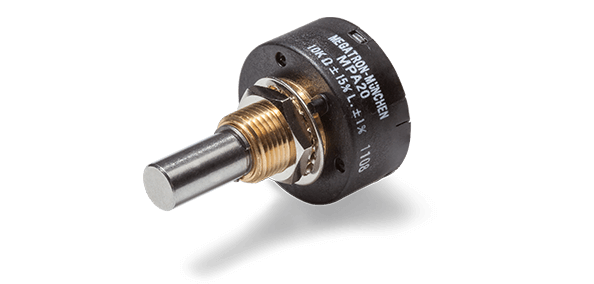
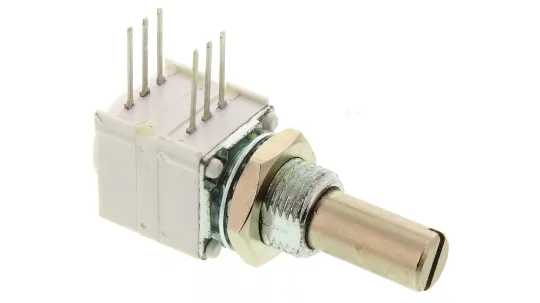
Tips for Choosing the Right Potentiometer
The following tips will help you choose the right potentiometer for your needs:
- Consider the application. What are you using the potentiometer for? This will help narrow down your options.
- Determine the required voltage and power rating. Make sure the potentiometer can handle the voltage and power requirements of your application.
- Choose the right resistance value. The resistance value will determine how much current can flow through the potentiometer. Choose a value that is appropriate for your application.
- Select the desired tolerance level. Potentiometers are available with different levels of tolerance, which refers to how accurate the resistance value is. Choose a tolerance level that meets your requirements.
- Consider the package type. Potentiometers come in different package types, which will affect their size and how they are mounted. Select a package type that is appropriate for your application
Conclusion
Rotary potentiometers provide an excellent way to precisely control the output of electrical appliances, machines, and tools. With its variety of features and functions, rotary potentiometers offer a versatile solution for any application where precise control is essential. Whether you need to make fine adjustments or tune complex systems, rotary potentiometers are your ideal choice for quickly and accurately controlling the output of electrical equipment.
Our Products
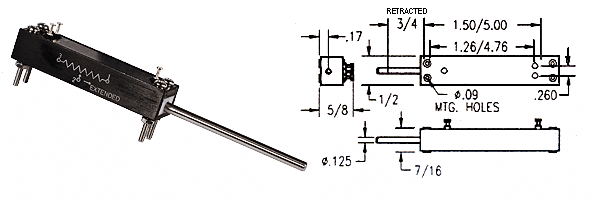
Conductive Plastic Element Black Anodized Aluminum Body, Stainless Steel Shaft, Gold Plated Terminals Recommended for Test and Lab Equipment, Industrial Applications, Medical Equipment (non-life support) Life Expectancy: 20 million strokes Resistance Tolerance: 20% standard (10% Available) Linearity Tolerance: .5% to 1.5% standard (0.3% to 1.0% Available) Power Rating: 0.2 to 1.2 Watt Electrical Stroke: 1″ […]

Conductive Plastic Element. Gold Plated Terminals. High Temp. Thermoplastic Housing. Stainless Steel Shaft. Recommended for Medical Equipment (non-life support), Robotics, Industrial, Test and Lab Equipment. Life Expectancy: 10 million turns Resistance Tolerance: ± 10% standard ( ± 10% available) Linearity Tolerance: ± 1.0% standard ( ± 0.5% available) Electrical Angle: 320º ± 5º Mechanical Angle: […]
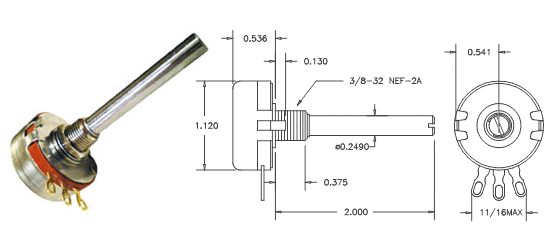
Hot molded carbon element Gold-plated terminals Stainless-steel shaft and housing Quality meeting or exceeding MIL-R-94 – QPL listed Rotational Life: 25,000 Resistance Tolerance: ± 10% or ± 20% Operating Temperature Range: -65°C to +125°C Power rating: 2 watts Insulation Resistance – dry: 10K Meg; wet: 100K Meg Dielectric Strength: 900 VRMS Starting Torque: 1 oz/in […]
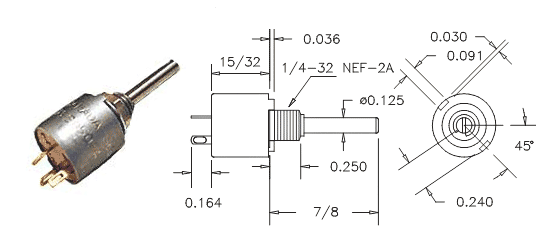
Hot molded carbon element One piece housing and bushing Stainless-steel shaft Quality meeting or exceeding MIL-R-94 – QPL listed Rotational Life: 25,000 Resistance Tolerance: ± 10% or ± 20% Operating Temperature Range: -65°C to +125°C Power rating: 0.5 watts Insulation Resistance – dry: 10K Meg; wet: 100K Meg Dielectric Strength: 750 VRMS Operating Torque: 0.5 […]

MG22 Concentric Turns Counting Dial Counts up to 20 turns. One Piece Mounting. Aluminum Housing. Black Nylon Knob. Numbers are White on Black Background. Over the Center Lock Available. Diameter – 7/8″; Extension from Panel – 1.0″ Maximum Panel Thickness – 1/4″ Weight: .2 oz

Electrical Specifications: 10K ohm precision potentiometer Single axis joystick Cylindrical knob Linearity (independent): ± 5.0% Lever Electrical Angle: 40° Max. Resolution: Essentially Infinite Mechanical Specifications: ± 20° from center deflection angle Life expectancy: 5 million operations Spring return to center Housing material: High temp. thermoplastic IP65 Rating
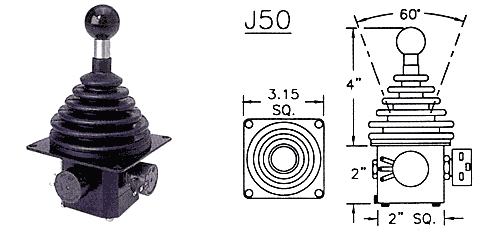
Two axis joystick 4″ handle height 60° deflection angle ( ± 30°) Ball knob Spring return to center Circular deflection pattern 10K ohm precision potentiometer Protective rubber boot (IP54 rating above panel) IP65 option available upon special request Panel mounting bracket
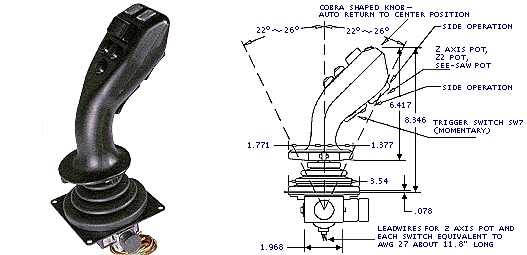
Multi-axis joystick 8.34″ handle height 45° deflection angle ( ± 22.5°) Spring return to center Cobra Head handle Circular deflection pattern 10K ohm precision potentiometers – all axis Three momentary switches (two illuminated, one trigger) Panel mounting bracket Protective rubber boot (IP65 rating above panel)
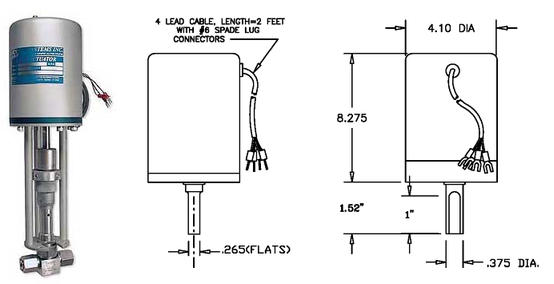
Input: 4 to 20 mA (200 ohms) or 0 to 10VDC (18KΩ) Rotation Speed : 1.5, 3, 5, 10, 20 or 40 RPM Power : 24 VDC (50 Watts min.) Dynamic Braking : Installed Limit Switches : Installed Torque Limiter : Set for Valve requirements. Wt : Approx. 21 in/lbs. max. Seating Limiter : Set […]
